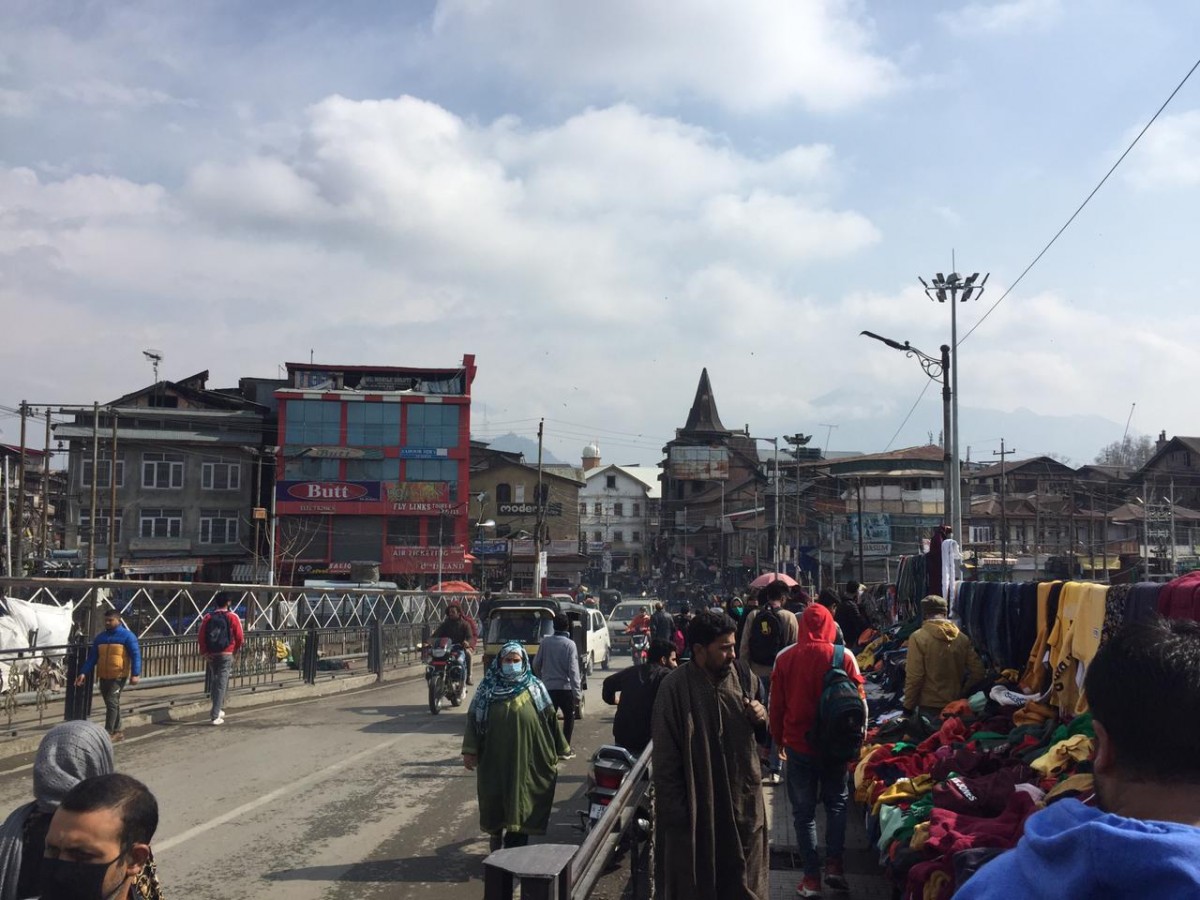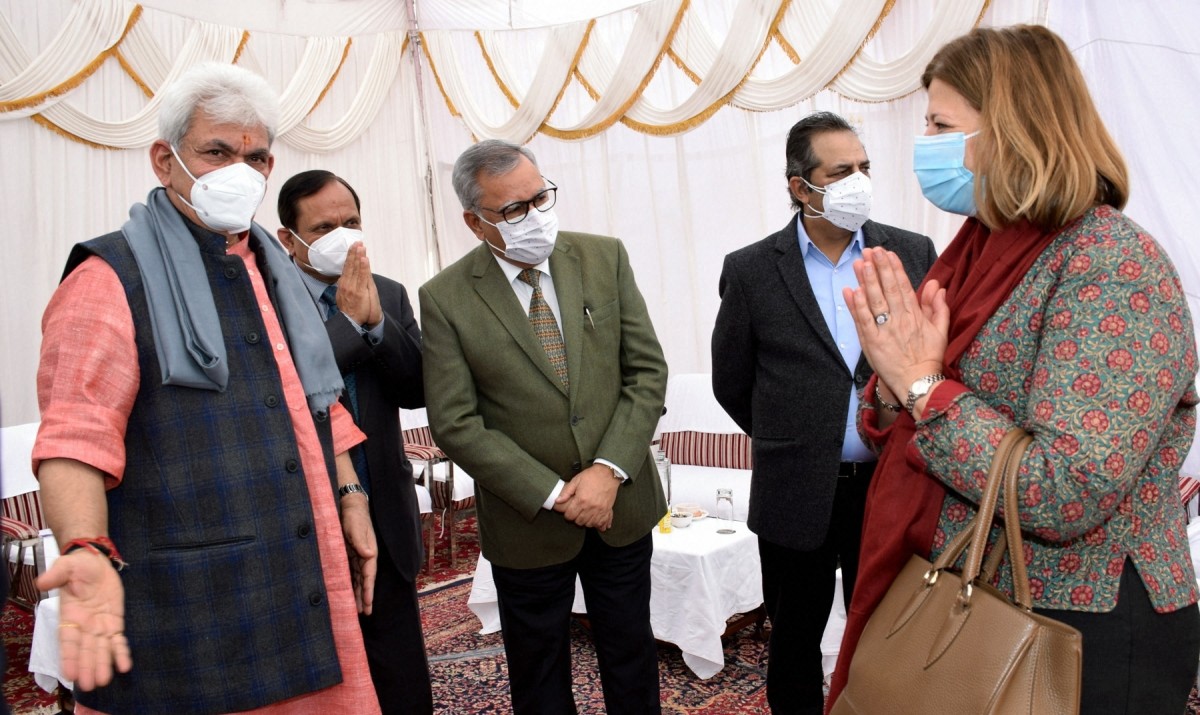In 'Naya Kashmir', 'Stop and Frisk' Action Brings Back Memories of Old Times
Srinagar: For Kashmiris, standing in long queues with their hands in the air and waiting to get frisked by men of the Army and paramilitary had been daily routine. For a while, there was a break from this, at least in Srinagar. But Monday, February 22, saw the return of this old practice. Srinagar's Lal Chowk saw men, irrespective of age, being stopped and frisked.
Memories of violence in the 1990s live strong among Kashmiris. Even those born after the era have grown up listening to these stories.
At around 3.30 pm on Monday, members of security forces – a common sight every five metres in the city for decades – abruptly seized the busiest area of Lal Chowk, Amira Kadal, and forced men of all ages to stand in a line.
They closed all exit points and stopped traffic for hours. “We thought they might have laid a cordon but when they asked shopkeepers to come out and stand in the line too, we understood that it is a crackdown like the 1990s,” said Javaid Khan, whose shop is near Amira Kadal.
Khan is a 42-year-old resident of the downtown area of Srinagar. He has vivid memories of the Army's crackdown in the area – of personnel asking men, women and children to come out of their homes, and making them stand for hours till their houses were searched. “This was not new for us. We have grown up witnessing such incidents and this is an everyday process here. But, it was frightening for youngsters,” he told The Wire.
As the frisking progressed, the forces started checking people's identity cards, bags, and even asked many as to why they were at the market. "People wearing pherans were frisked more and even some were asked to remove them. An old man’s pheran was torn down by forces after he couldn’t take it off quickly,” Khan alleges.
“Even children were frisked from head to toe and their bags were checked."

The busiest area of Srinagar's Lal Chowk, Amira Kadal. Photo: Kaisar Andrabi
Two days ago, militants opened fire on two policemen at Baghat, an upscale locality in Srinagar, killing both of them. A short video of the attack circulated on social media shows a man in a pheran, a Kashmiri tunic worn during winters, taking out what appears to be an automatic rifle and shooting at the policemen. The man is seen running away in the video.
The surge in violence in Kashmir has made security forces more anxious and has triggered suspicion towards local population, resulting in widespread fear.
Also read: As Violence Surges in Kashmir, a Trail of Shattered Families
On February 20, Kashmir’s top police officer Vijay Kumar chaired a meeting with several other high-ranking officials and later in a statement, police said it will double down with a range of security measures and intensify its “close watch on anti-nationals”.
The increase in frisking in Kashmir is not only making the lives of people difficult but also affects the business sector.
'New Kashmir'?
After removing the special status of the erstwhile state, granted under Article 370 of the constitution in 2019, Prime Minister Narendra Modi in a speech last year had sidelined all criticism of the unilateral decision and said that people will see a 'new Kashmir' soon.
However, the current picture of the region harks back to a distinctly 'old Kashmir'. With an increase in incidents of violence and disturbance, the current situation in Kashmir appears to be moving from bad to worse.

Lt. Gov. Manoj Sinha interacts with foreign envoys, who are on a two-day visit to Jammu and Kashmir, in Jammu, Thursday, Feb. 18, 2021. Photo: PTI
“Few days ago when there was a visit of foreign envoys in the valley, authorities removed scores of army bunkers which were installed since August 5, 2019, to show them that everything here is normal,” says Waseem Ahmed, a street vendor in Lal Chowk.
For him, Monday's action by the forces is a clear signal of a lack of stability in the valley. “They are saying tourists should visit here, how can they come when they take up such crackdowns in broad daylight,” he asks.
Standing next to him, another vendor tells The Wire that the presence of additional forces in the city is no good news for women.
“A few days ago I had an argument with a man from the Army because I saw him staring at the woman who mans by stall for hours. I asked him to focus on his duty and not harass women," he says, requesting anonymity.
Senior journalist and author Gowhar Geelani tells The Wire that the removal of bunkers ahead of the visit of foreign envoys could have showcased normalcy to the visitors but, "What happened in Lal Chowk yesterday is the actual 'normal' situation on the ground."
Geelani recalled a famous play on the crackdown in Kashmir. “I remember a play that was directed by Mohammad Amin Bhat, it was titled as Shanakhti Card Kashmir Aur Drama and the theme was, 'if you want to secure your life in Kashmir, you need to carry your identity card always'."

Military personnel stand near the site of an encounter at Lawaypora on the outskirts of Srinagar, Wednesday, Dec. 30, 2020. Photo: PTI/S. Irfan
Geelani rejects the claim made by authorities of normalcy in Kashmir and says, “Saying infiltration has come down to almost zero or that we have killed 'n' number of militants in the last year does not show normalcy. Yesterday’s action reflects what the reality on the ground in every street of Kashmir is."
The Wire has attempted to contact the Inspector General of Police for his comments on Monday’s crackdown in the city but he did not respond. The story will be updated if and when he does.
Kaisar Andrabi is an independent journalist from Kashmir and tweets at @KAndrabi.
This article went live on February twenty-third, two thousand twenty one, at forty-two minutes past six in the evening.The Wire is now on WhatsApp. Follow our channel for sharp analysis and opinions on the latest developments.




